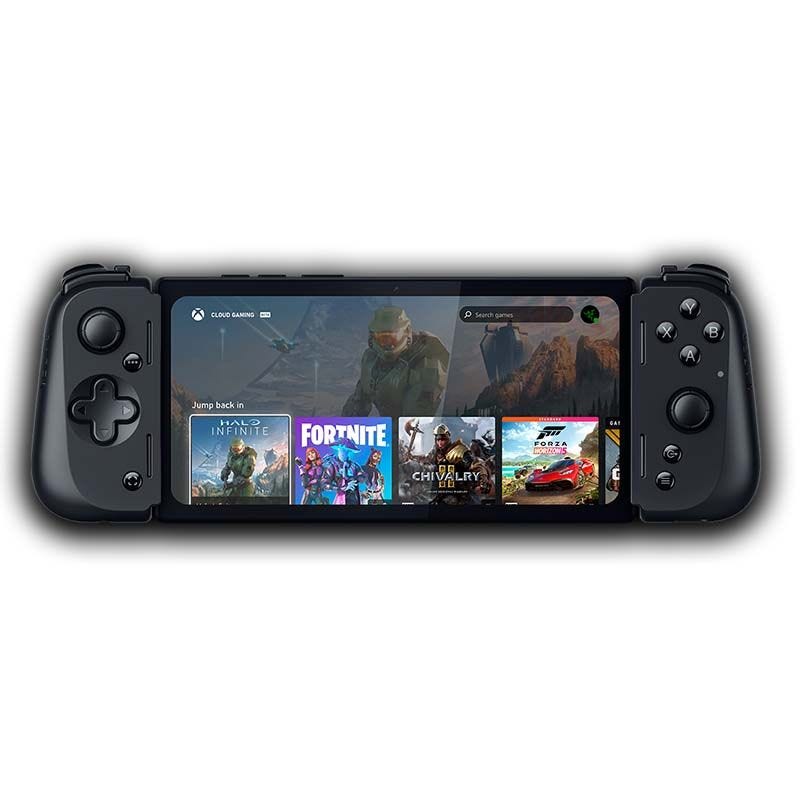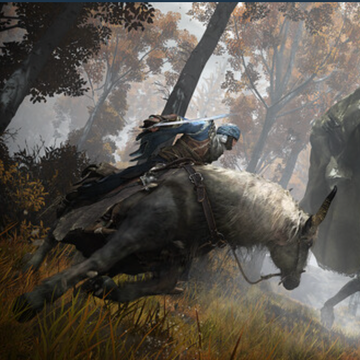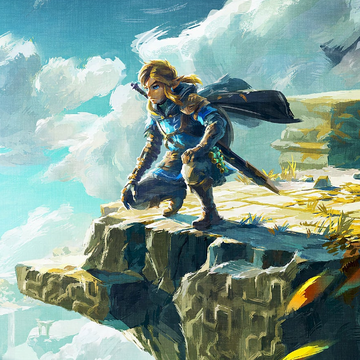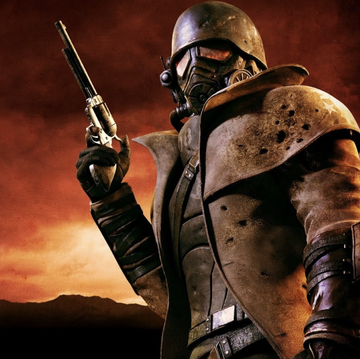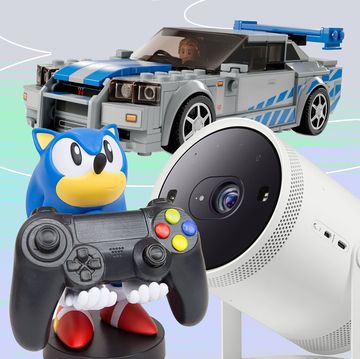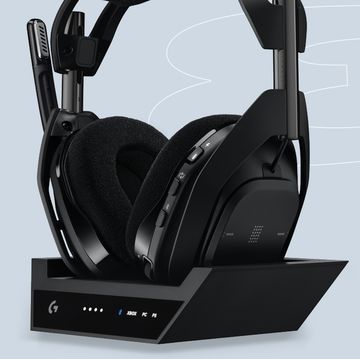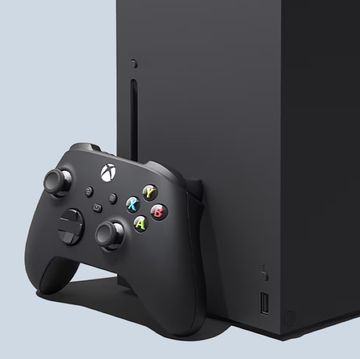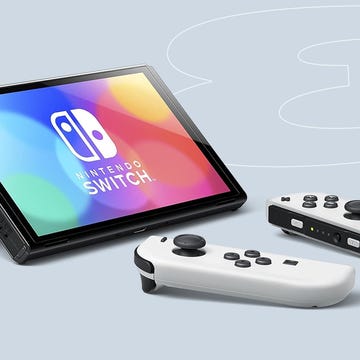Razer released their new handheld gaming device earlier this February, and it’s already split the community. On the one hand, the Razer Edge—which is really just an Android tablet with a detachable controller—is a surprisingly capable piece of hardware. It has a crazy-powerful chip, an HDR OLED screen that’s nearly double the resolution of the Nintendo Switch, and up to 8gb of RAM, so it can handle anything you can throw at it.
But, like I said, it’s really just a tablet with a USB gamepad. It’s only a little bigger than the phone you likely already have, and with a little bit of eBay savvy, this is the kinda thing you could pretty much put together yourself on the cheap. Unlike Valve’s Steam Deck (a portable gaming PC that gamers adore), you cannot run PC games without an internet connection, unless they are among the very few major titles available for Android. So, with the (base-level) $399 price tag, a lot of reviewers have been asking…“Who is this for?”
Well, I have an answer for those critics, and for you, dear reader. It’s for me. As a former GameBoy kid who dreamt of one day having his entire gaming library on one super powerful and super portable device, the Razer Edge is just for me!
The Steam Deck is too big, the Nintendo Switch too constraining. More esoteric options like the Ayn Odin and Retroid Pocket don't have sharp enough screens, and older handhelds like the PS Vita or Nintendo 3DS are just too antiquated to compete. The Razer Edge, though, it’s just right. Yeah, at $399 for the Wi-Fi model, and even more for the 5G version, it’s pricey as hell. But it’s the best out there right now. And it’s kind of consumed my life.
Now, I’ll acknowledge the obvious here: By running on Android, the Edge is in a weird spot. The Google Play store—vast as it is—doesn't get a ton of love from publishers the way, say, Apple Arcade does. Hardware-speaking, it may blow the Nintendo Switch out of the water, but it’s not like you’re going to be playing Breath of the Wild on this thing. Out of the box, the Edge takes a bit of work to get going, but that's not necessarily a bad thing, if you're willing to give this thing the time.
For me? It wasn't a problem at all. I love to tinker! I love to needle through the nitty-gritty of an operating system, install my own frontends, hang out on some Discords, poke through Github for community-built apps, and put in the effort to assemble all my games in one nifty place. It’s like organizing your own digital bookshelf. This is the kind of stuff you can only do on third-party devices like the Razer Edge—Nintendo would never!
Sure, for a while now, these sort of devices have been available (check out Retro Dodo or Retro Game Corps if you're looking to get into this scene). But I’ve not seen one as powerful, as portable, and as good-looking, as the Edge. It really blows my mind.
Now that most phone screens are giving you 4k, it’s hard to look at the screens of the Steam Deck or the Nintendo Switch, both of which are still stuck around the pitiful 720p resolution. Since the Edge comes packed streaming with apps like Steam Link, Nvidia GeForce Now, Parsec, and Xbox GamePass, you’re going to be playing a lot of BIG games on this device. You're looking at console-sized titles that deserve big, shiny visuals. At last, we have a portable device here that can do them justice. I mean, 144Hz streaming is available via Steam Link. That’s about as smooth as you can get right now (and you can do it over Verizon's Ultra Wideband network if you're spring the 5g version).
Speaking of smooth, the Razer Kishi v2 controller which comes included with the Edge (available separately for $99), is hands-down one of the comfiest gamepads I’ve ever laid my hands on. The tablet itself was wide, but the way it sits inside the upgraded Kishi feels great. The joysticks are springy, the buttons have this fantastic clickiness to them, and Razer’s included this “Nexus” app that allows you to remap the Kishi’s input and even assign its buttons to games that have touch-only controls (crazy!).
As much as I have enjoyed this kooky little tablet-plus-controller combo (and believe me, I’ve lost two weekends and counting to this thing), I can understand the divide in the community. I mean, Razer was bound to get some kind of reaction to the thing. They were the ones advertising it as the “Ultimate Android gaming handheld.” What did they expect?
At $399, this is at least $100 more expensive than a Nintendo Switch. It also puts you right in the ballpark of the base-level Steam Deck, which unlocks all those PC games you can’t get on a streaming service. So it’s a lot to ask, especially for an Android device.
And I’d be remiss not to mention the release snafu that went down before the Edge shipped—the Wi-Fi version of the Edge turned out to only have 6 GB, not 8 GB, of RAM, as originally advertised. Razer dropped a statement to press about that, saying, “The Razer Edge Wi-Fi version has 6 GB, while the 5G version has 8 GB. Our Razer.com tech specs and product page had previously listed the Wi-Fi version as having 8 GB of RAM—this mistake has since been corrected.” There’s also been some confusion regarding the Qualcomm Snapdragon chip, which gamers were claiming is just a clever rebrand of an existing model. Suffice it to say, Razer’s rollout of the device wasn’t exactly flawless.
But what inspires me about this device—aside from the performance and AMOLED screen—is the way it will, no doubt, push the already-growing handheld industry forward. Nintendo has been crushing it with the Switch for five years now. But a lot has changed in those five years. Games have gotten bigger. More demanding. With the PlayStation Portable and PS Vita, Sony has shown an interest in handhelds before. Xbox unlocked the majority of its titles for handheld devices with its Game Pass service. Now that a massive industry mainstay like Razer has gotten into the game with the Edge, it’s starting to become quite clear that handhelds are making a comeback. And as more brands put forth a competitor, gamers only stand to benefit from that competition.

